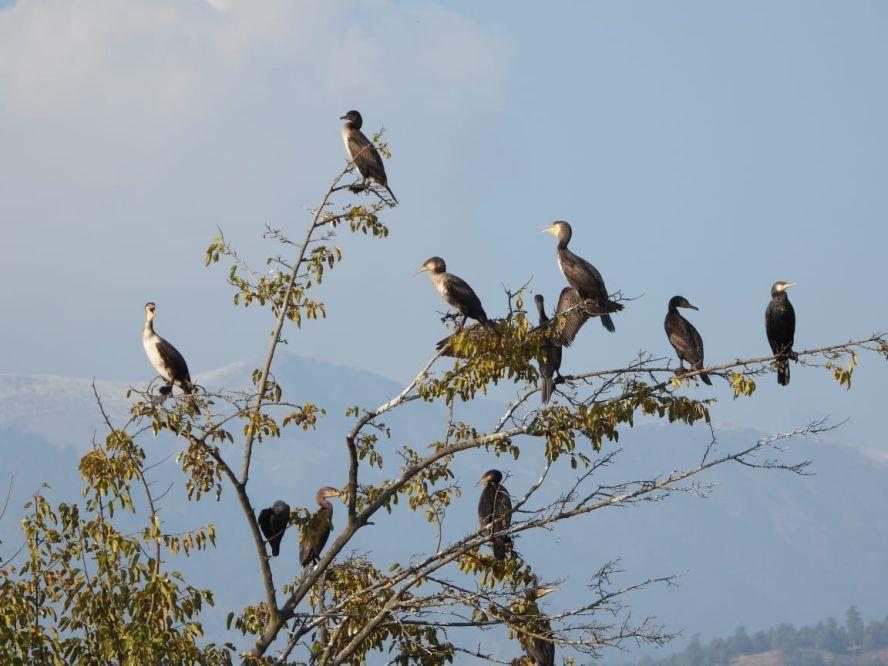
Bird Populations Drops 2538% Due To Heat: Study
The research, published on Monday in the journal 'Nature', involved scientists from the Potsdam Institute for Climate Impact Research (PIK), the University of Queensland and the Barcelona Supercomputing Centre (BSC).
“It's a staggering decrease. Birds are particularly sensitive to dehydration and heat stress. Extreme heat drives excess mortality, reduced fertility, changing breeding behaviours and reduced offspring survival,” said lead author Maximilian Kotz, a guest researcher at PIK and researcher at BSC.
The study found that tropical birds today face extreme heat on an average of 30 days a year, compared to just three days four decades ago. Overall, they are now exposed to 10 times more extreme heat events than in 1980.
By combining observed data with models, the researchers were able to identify the effects of climate change on bird populations worldwide, with a focus on heat and precipitation.
Read Also First-Ever Sighting Of Great Bittern At Wular Lake Letter To Editor | Global Bird Population On The Decline“Compared to a counterfactual without human-driven climate change, the historical intensification of heat extremes has caused a 25-38 per cent reduction in the level of abundance of tropical birds, which has accumulated from 1950 to 2020,” the study said.
The steepest population declines were recorded in the tropics, but nearly every region saw reductions in abundance, with extreme heat identified as the greatest factor.
“Rising temperatures are really pushing species out of the ranges that they have naturally adapted to and in a very short amount of time,” Kotz said.
Until now, separating the impacts of climate change from losses caused by direct human activities such as deforestation has been challenging.
The research team's methods allowed them to do so, revealing that in lower-latitude tropical regions, intensifying heat extremes are already contributing more to bird population declines than deforestation and habitat destruction, PIK said in a statement.
This may help explain large declines in bird numbers recently reported from undisturbed tropical rainforests in the Amazon and Panama without a clear cause, it added.
“On the conservation side, this work tells us that in addition to protected areas and stopping deforestation, we urgently need to look into strategies for species who are more vulnerable to heat extremes to maximise their adaptation potential. That might mean ex-situ conservation work so working with some populations in other locations,” said co-author Tatsuya Amano from the University of Queensland.
“Ultimately, our emissions are at the heart of this issue. We need to be bringing them down as fast as possible,” Kotz said.

Legal Disclaimer:
MENAFN provides the
information “as is” without warranty of any kind. We do not accept
any responsibility or liability for the accuracy, content, images,
videos, licenses, completeness, legality, or reliability of the information
contained in this article. If you have any complaints or copyright
issues related to this article, kindly contact the provider above.
Most popular stories
Market Research

- 0G Labs Launches Aristotle Mainnet With Largest Day-One Ecosystem For Decentralized AI
- Origin Summit Announces Wave 3: Animation Powerhouse Maggie Kang To Join Programming Lineup
- WBTC Strengthens Its Role As Multichain Standard For Bitcoin In Defi
- Stonehaven Circle Marks 13Th Anniversary With Hadrian Colwyn Leading Calvio Ailegacyx Innovation
- Solstice Announces Strategic Collaboration With Chainlink And Leading Custody And Venture Firms To Enhance Ecosystem Ahead Of USX Stablecoin Launch
- Easystaff Data Reveals 6.8× Growth In Payroll Use Of Stablecoins



















Comments
No comment